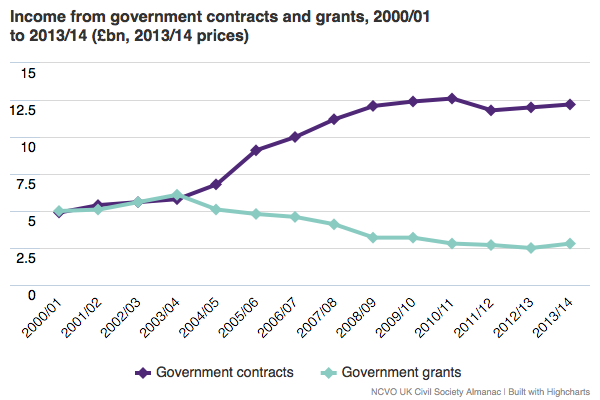When is a grant not a grant…and why should we care?

Julian Tait: Project Lead, Greater Manchester Pilot
During the course of the Greater Manchester pilot, we’ve been running workshops for a broad range of grant giving organisations, providing an opportunity to listen and understand how these organisations create and use data. It should come as no surprise that grant data is recorded in a myriad of different ways using a variety of methods.
Sometimes data is recorded for a statutory requirement and collected from different departments, and for others it exists on a small spreadsheet on a grant administrator’s computer.
These data are an interpretation of the act of grant giving often represented by the language of the individual or organisation. Within an individual organisation these varying interpretations are generally not a problem, but when data is aggregated across different organisations, difference of interpretation can be magnified with a potential loss of context and understanding.
When working on technology projects it is very easy to get drawn into a lexicon of language and methods that assume the world is orderly, precise and logically constructed, whereas the opposite is often true. The challenge with any data standard, not just 360Giving, is that it has to create a framework on which different interpretations of reality can be recorded with certainty. To do this we have to make sure that we have a shared understanding of what things mean.
Within the 360Giving workshops effort is spent on defining language so that people have confidence in using the standard. As individuals we assume that people using the same words mean the same thing but often this is not the case – words are context dependent and open to interpretation – which is great for poetry but not so much for data entry.
You would assume that a grant is a well understood term – ‘non-repayable money given from one organisation to another – usually non-profit or charitable organisation – for the support of activity set out in the terms of a grant’. This is significant especially when we look at the support local authorities give to voluntary, community sector organisations and how local authorities comply with the Local Government Transparency Code in recording grants.
According to the NCVO Civil Society Almanac 2017, Local Authorities are the biggest funders of the voluntary and community sector, spending £7.4bn on grants and contracted services according to 2013/14 figures. The nature of the funding mix is roughly 50:50 for grants and contracted services in 2004, trending to 80:20 by 2014, where the larger proportion for contracted services hints at a complex and evolving relationship. When is a grant not a grant? And when is a grant a contracted service?

The nature of grant funding is changing and often – like a procured or contracted service- it is competitive. There is a finite amount of money available and a successful grant application would need to meet the criteria of the grant funding scheme, going through a selection process that would assess its quality, likelihood of delivery and due diligence. There would in all likelihood be a grant funding contract or agreement that sets out what the money has been given for and how compliance with the agreement is evidenced. Within the agreement there might also be a claw-back clause if the agreement or contract is not met. To this extent the distinction between grants and contracted services is unclear.
The grant or contract dilemma is not just one that is unique to local government either. As more organisations take a multi-partner approach to grant giving, shared and agreed definitions need to be created for not only what constitutes a grant but for the activity taking place.
The 360Giving Standard allows a wealth of information and context to be recorded, and like all good standards it is evolving to accommodate the complexities and grey areas that grant givers face. Adopting a standard to record information in the first place starts organisations off on a journey that should not only make their data more useful for themselves, but also for future partners and organisations seeking funding.
